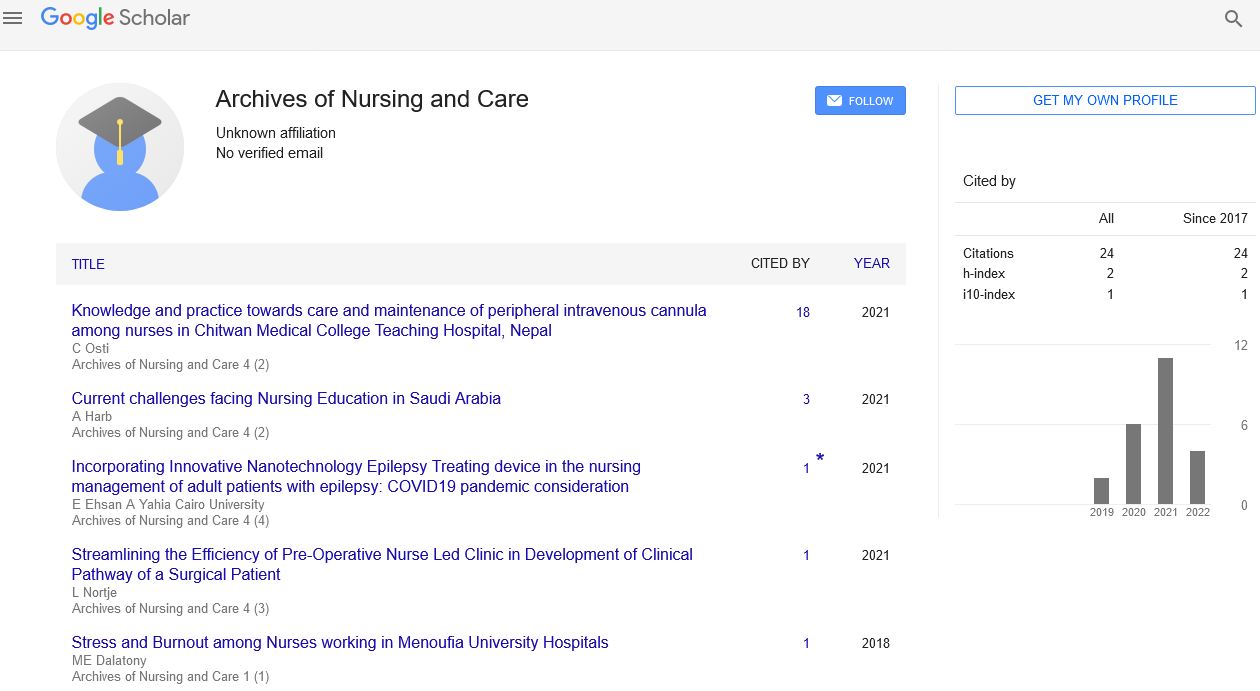Commentary - Archives of Nursing and Care (2022) Volume 5, Issue 6
A Short Note on Perceptions of Health Care Providers Strategies to Limit Out-of Pocket Costs for Cancer Care
M. Mathews*
Maria Mathews, Division of Community Health and Humanities, Faculty of Medi¬cine, Memorial University, Health Sciences Centre, St. John’s, Newfoundland and Labrador AIB 3V6.
Maria Mathews, Division of Community Health and Humanities, Faculty of Medi¬cine, Memorial University, Health Sciences Centre, St. John’s, Newfoundland and Labrador AIB 3V6.
E-mail: mmathews@mun.ca
Received: 02-May-2022, Manuscript No. oanc-22-55012; Editor assigned: 03-May-2022, PreQC No. oanc-22- 55012(PQ); Reviewed: 16-May-2022, QC No. oanc-22-55012; Revised: 23- May-2022, Manuscript No. oanc-22- 55012 (R); Published: 30-May-2022, DOI: 10.37532/oanc.2022.5(6).52-53
Abstract
The perceptions of health care providers concerning patient and health care provider strategies to limit out-of-pocket costs for cancer care. Patients try to minimize costs by substituting or rationing medications, choosing radical treatments, lengthening the time between follow-up appointments, choosing inpatient care, and working during treatment to minimize loss of income. Providers respond to the financial concerns of patients by helping them to access financial assistance programs, by changing chemotherapy and supportive drug prescriptions, and by shortening radiation treatment protocols [1]. They admit patients to hospital and arrange follow-up with physicians closer to a patient’s home.
Keywords
chemotherapy• radiation
Introduction
Canada’s universal public health insurance covers the costs of all medically necessary cancer care provided in clinical settings, patients still incur substantial out-of-pocket costs related to their care. Recent Canadian studies have shown that out-of pocket costs for cancer care are substantial. These costs include expenses directly and indirectly related to treatment [2]. Direct costs include drugs (prescription, alternative, and over-thecounter medicines), alternative therapies, medical supplies, home care, and nutritional supplements; indirect costs include prostheses and wigs, travel, lodging, meals, child or elder care, telephone, home support, furniture modifications, and loss of income for patients without sick leave benefits.
We used qualitative interviews with cancer care providers to examine, from the providers’ perspective, how they and their patients respond to out of-pocket costs [3]. The present article is based on a larger study of out-of-pocket costs incurred by cancer patients that included both surveys of patients and qualitative interviews with care providers. Here, we report exclusively on the findings from the qualitative interviews.
Description
A number of studies have examined how patients respond to high out-of-pocket costs, but these studies have largely looked at costs related to prescription drugs and were conducted in the United States. By comparison, few studies in Canada have examined the strategies that patients and their provide [4]. Qualitative interviews with cancer care providers to examine, from the providers’ perspective, how they and their patients respond to out of-pocket costs. The present article is based on a larger study of outof- pocket costs incurred by cancer patients that included both surveys of patients and qualitative interviews with care providers. Here, we report exclusively on the findings from the qualitative interviews. Identification potential participants from the staff list of the provincial cancer care agency [5]. In addition, we asked participants to identify other individuals to interview. Eligible participants were actively involved in cancer care in the province, spoke English, and were willing to participate in an interview. The goal of our recruitment strategy was to interview people who would reflect a variety of opinions and experiences. The final number of interviews was determined by saturation of themes and concepts: that is, interviewing continued until no new ideas emerged. When health care providers become aware of cost concerns, they may alter treatment protocols. For example, providers may change drug prescriptions for either chemotherapy or for supportive drugs and “try to come up with a comparable treatment [that] will be covered [by the patient’s private insurance].” Or they will ask drug companies to provide drugs at reduced or no cost: “It depends on whether ... we’ll have to get them compassionaterelease drugs if they don’t have a drug plan. Sometimes it depends; we’ll change our entire chemo regimen based on geography and finances.” Hospitalization was used for patients at any phase in their treatment if out-of-pocket costs or the provision of care at home posed a substantial burden. their role in the delivery of cancer care, how they identify financial concerns in their .patients .The types of financial concerns that affect patient treatment decisions, and how those financial concerns influence treatment. Here, we focus on the responses to the last two questions. A separate article examines responses to the second question (Mathews M, Park AD. Cancer care providers’ perceptions of barriers to identifying cancer patients in financial need. In preparation). Interviews were done in person or over the telephone and lasted up to 1 hour.
Acknowledgement
None
Conflict of interest
No conflict of interest
References
- Grunfeld E, Coyle D, Whelan T et al. Family caregiver burden: results of a longitudinal study of breast cancer patients and their principal caregivers. CMAJ .170:1795–801(2004).
- Longo C J, Fitch M, Deber RB et al. Financial and family burden associated with cancer treatment in Ontario, Canada. Support Care Cancer 14:1077–85(2006).
- Houts PS, Lipton A, Harvey HA et al . Nonmedical costs to patients and their families associated with outpatient chemotherapy. Cancer 53:2388–92(1984).
- Lauzier S, Maunsell E, De Koninck M et al. Conceptualization and sources of costs from breast cancer: findings from patient and caregiver focus groups. Psychooncology 14:351–60(2005).
- Moore K. Out-of-pocket expenditures of outpatients receiving chemotherapy. Oncol Nurs Forum 25:1615–220(1998).

